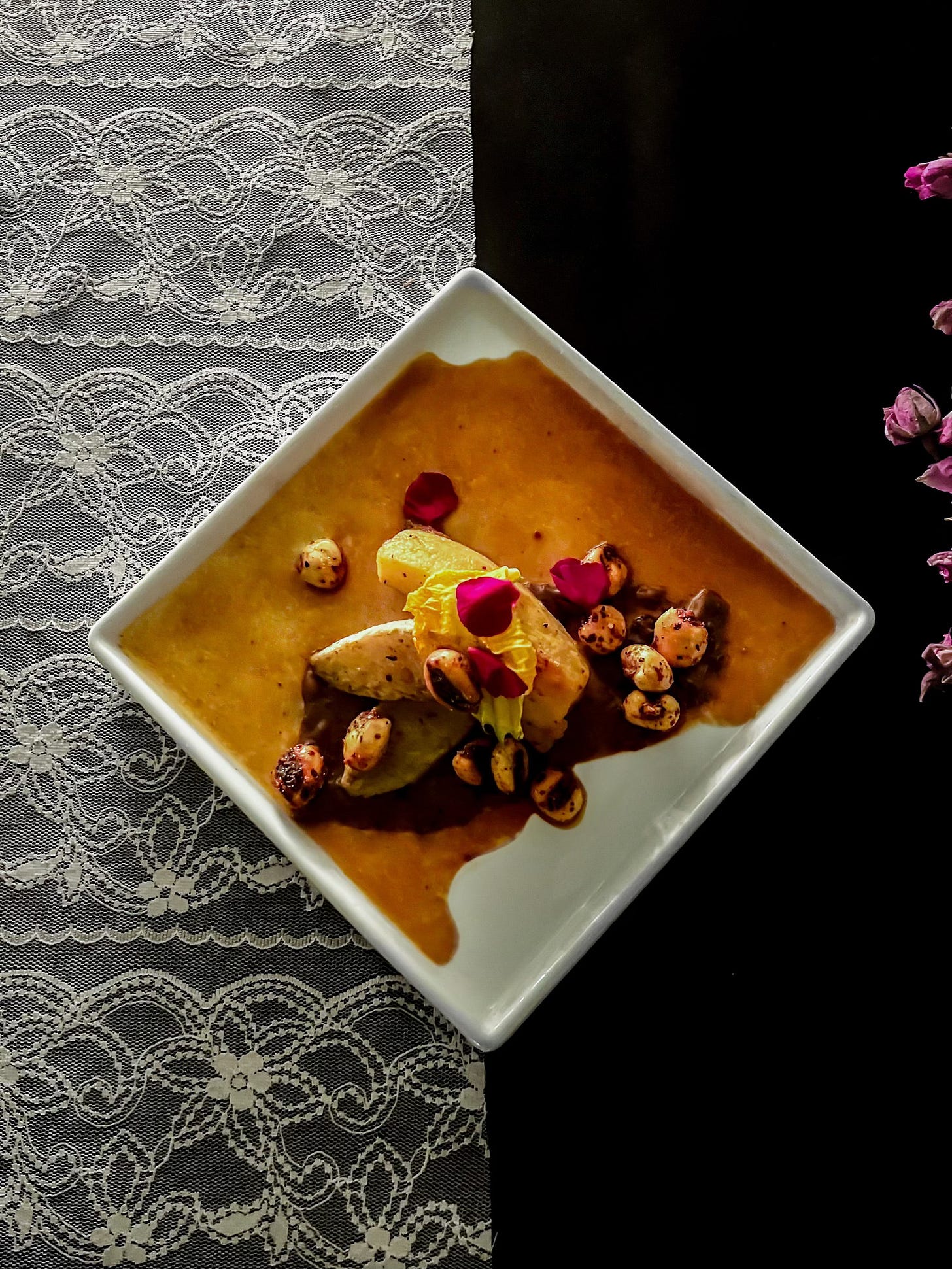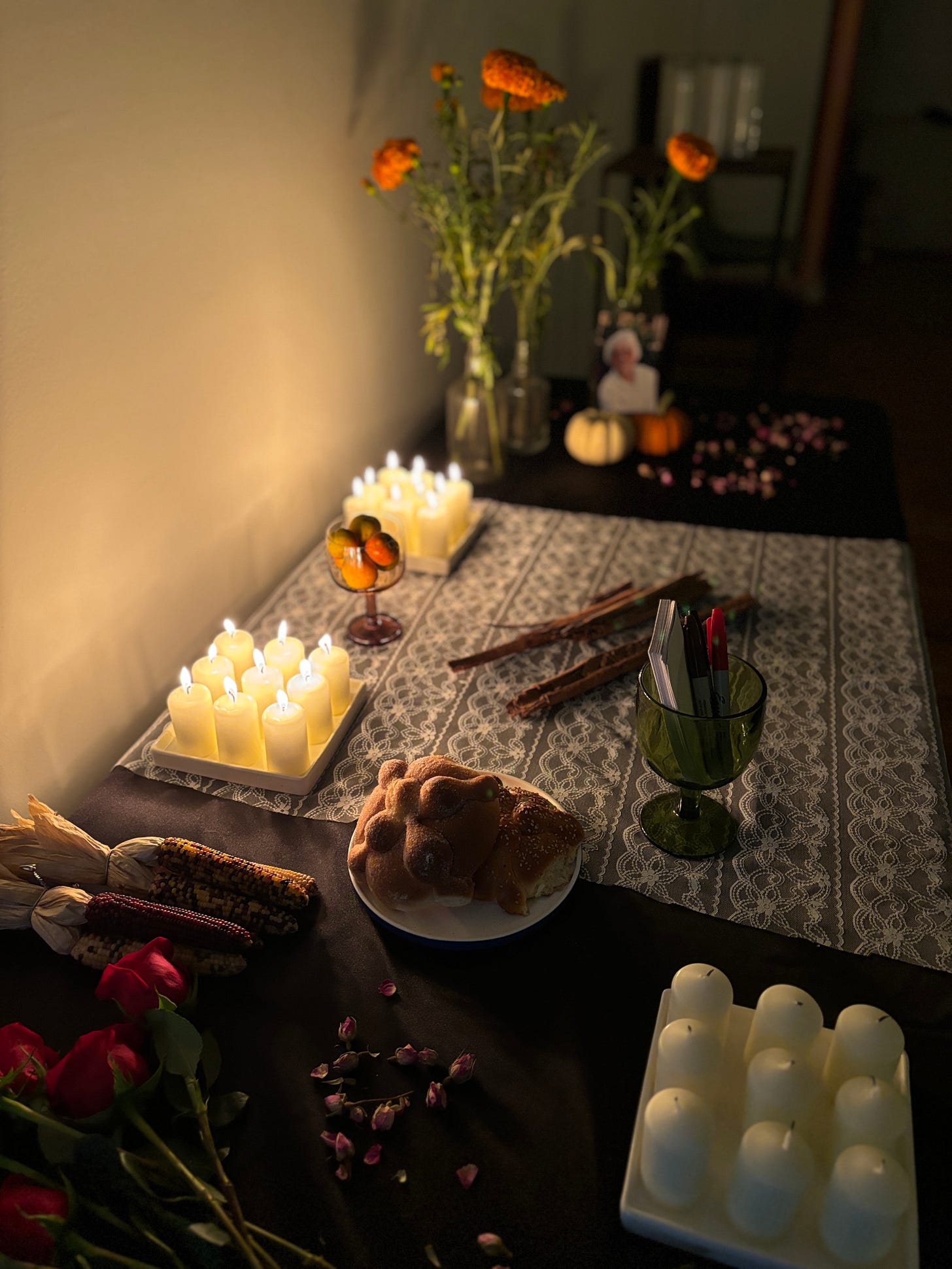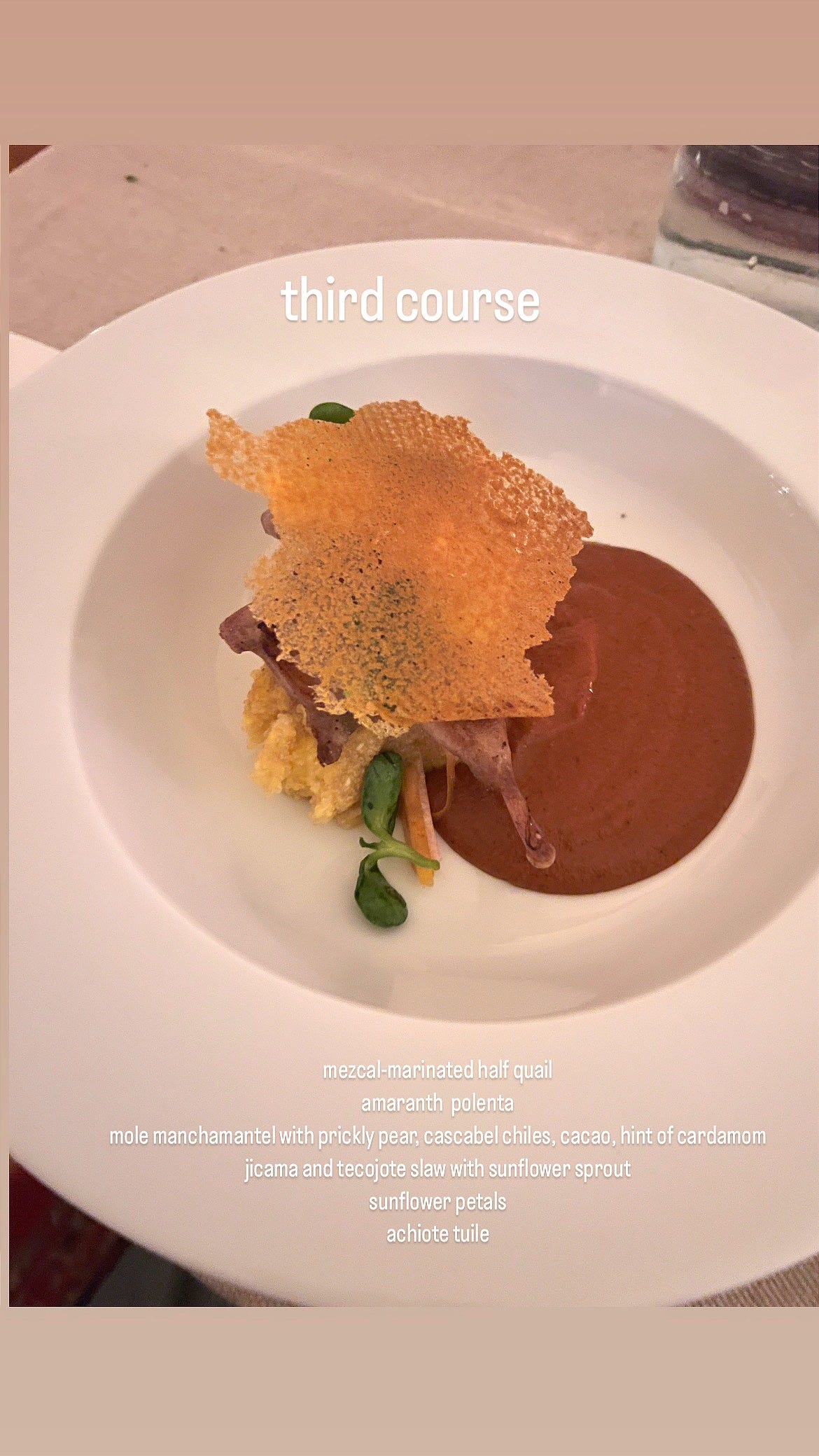I was hoping to write this like two weeks ago right after the last dine well supper club on November 3rd, but…. some sort of crazy stuff happened in America. And I’ve been um…. distracted? busy? losing my goddamn mind? Some combination of those.
I won’t waste words on hopeful platitudes or fire/brimstone, we’ve all heard more than enough of both. But I want to share something interesting about the grieving traditions in Judaism that I learned recently- very recently, because I am more of a “bacon-wrapped shrimp on Yom Kippur” Jew than a “knows the Talmud” Jew.
Mourning or bereavement is observed in stages. The first one is aninut, which is when one has just received the news and is in complete shock. Shortly thereafter begins the actual grieving process, avelut. The first part of avelut, known as shiva, is the most well-known and lasts for a seven day period beginning with a funeral or burial. During shiva mourners don’t leave the house or go to work, and in many traditions, don’t cook, bathe, shave or even look in a mirror- visitors making “shiva calls” bring food and do housework (and it’s a mitzvah- a good deed- to do so).
But shiva is just the first part of a month-long grieving period called shloshim. After shiva ends, we do reenter the world somewhat, but refrain from most festive gatherings and are still very much considered to be in mourning. For the death of a parent, the traditional avelut period lasts 12 months.
I say this because on November 5th a lot of us experienced a deeper loss than just an election. It was a loss of hope, and for some, perhaps even a loss of innocence or naïveté about what our country is actually built upon and really values. We’re still in shloshim, so go easy on yourself- we need time to mourn and grieve. But on December 6th, we get. to. work.
And now, a little bit of good food in this shit world :) enjoy this little video my phone made (which I always find a little creepy, but it’s rather nice)!
The second installment of the dine well supper club went honestly….. so unbelievably well. We still sort of can’t believe everyone is just as into it as we are. It took place on November 3rd, the day after Día de los Muertos, so the menu concept was one that centered and honored pre-Columbian Mesoamerican ingredients; in non-chef bullshit terms, all the food was made of things that existed on the land of modern-day Mexico before Spanish colonization. We had a gorgeous ofrenda we created based on the advice of Dario’s family, making sure we observed the proper traditions and rituals as much as possible. The whole affair felt so in line with one of the core values I have not just for the supper club, but for my culinary life- traditional foods, not traditional values.
Researching and crafting this menu was SO. FUN. for my extremely nerdy and research-addicted brain. And there was a deeply personal element in this concept for both Dario and me- Dario is himself Mexican and grew up in the Mission district of San Francisco. As for me, back in Berkeley I had a wonderful longtime sous chef who was from Michoacán; Irma and I worked side by side- just the two of us- six hours a day for six years.
I was in my 20s but she was in her 50s, a grandmother three times over, and she really became a sort hybrid good friend/maternal figure for me. Over time as we got closer (and as my Spanish improved from that of a 3-year-old to like maybe a sullen teenager), she slowly began to show me some techniques and recipes that she’d learned from her own mother and grandmother.
To this day I feel really honored by her willingness to show me- nay, trust me- with this precious culinary wisdom. This is the kind of thing you will never learn at culinary school or working at Daniel Boulud, and as many of you know, it’s this traditional wisdom that really speaks to me on a deeper level.
I still make a lot of things just how she taught me- her world famous tortilla soup, her foolproof Mexican rice, the rapid-fire way she cut avocado into uniform chunks, the way she low-and-slow-roasted dark meat chicken to a juicy, shreddable tenderness (in the California taquería style that I miss so much and is for some reason damn near impossible to find in NYC).
Two elements of the meal were paying direct homage to my years under Irma’s tutelage: the refritos (refried beans), made just like she taught me, and the mole.
As you may know, mole is subject not to just regional variation, but also variation between different families and households. Irma and I made mole together only once, and I’ll never forget watching her fry Ritz crackers in butter to blend into the sauce. I remember chuckling at how random it seemed, and she explained that’s her family’s “secret ingredient” (so don’t spread it around!). The one I made is one of the seven Oaxacan moles known as mole manchamantel (“tablecloth stainer”) and is traditionally fruity and nutty (like me!); I used prickly pear, tecojote, cacao, cascabel chiles, toasted pecans and of course, butter-fried Ritz crackers <3

Other fun menu elements included quail from a small family farm in Vermont, chapulínes en adobo (spiced fried grasshoppers!), hoja santa (“sacred leaf/herb”, mild anise-like flavor), sunflower sprouts and petals, a “three sisters” dish of beans/corn/squash, and- naturally- a different preparation of corn in every single course (if you’d for some reason like to read more about my obsession with corn, you can do so here). We had heirloom blue corn tlayuda/tostada, corn nuts, a polenta-amaranth blend, an ice cream of corn and nata, and corn-sesame cookies- all of it lovingly handmade by us.
We’ll be skipping December (lol nobody needs ANOTHER party on their calendar let’s be honest) but we’ll be back in January for the next edition of the dine well supper club so stay tuned!
I’ll end with this- when trump won the 2016 election, one of my favorite writers/podcasters and political pundits Dan Savage had this to say: “we must fight to live, but live not just for the fight.” Joy is also a form of resistance. Spending quality time with loved ones, random acts of kindness, taking care of our micro- and macro-communities, laughter, keeping up with routines and rituals…. and of course, eating food that truly feeds us, body and soul <3







I love this! Chef Kayla's descriptors and honoring her mentors/co-creators positively scream her deep and meaningful reverence for the traditions that support our cultural cuisines and their histories. Nothing stimulates our roots more than sharing generational memory/knowledge of foods, tastes, odors, textures, colors, and sensations. Kayla displays her genuine wisdom about the truism that taking meals together is the most instinctively bonding of all human activities. This post reveals the essence of Kayla's passion for, and devotion to this most powerful of human connections; creating unforgettable food is her form of worship, gratitude, and shareable peak experiences. Those enviable few who are lucky enough to take part in her faith are fortunate indeed.
Always love getting your posts!!
Inspiring, educational and funny too.They always make me hungry for more!❤️❤️❤️